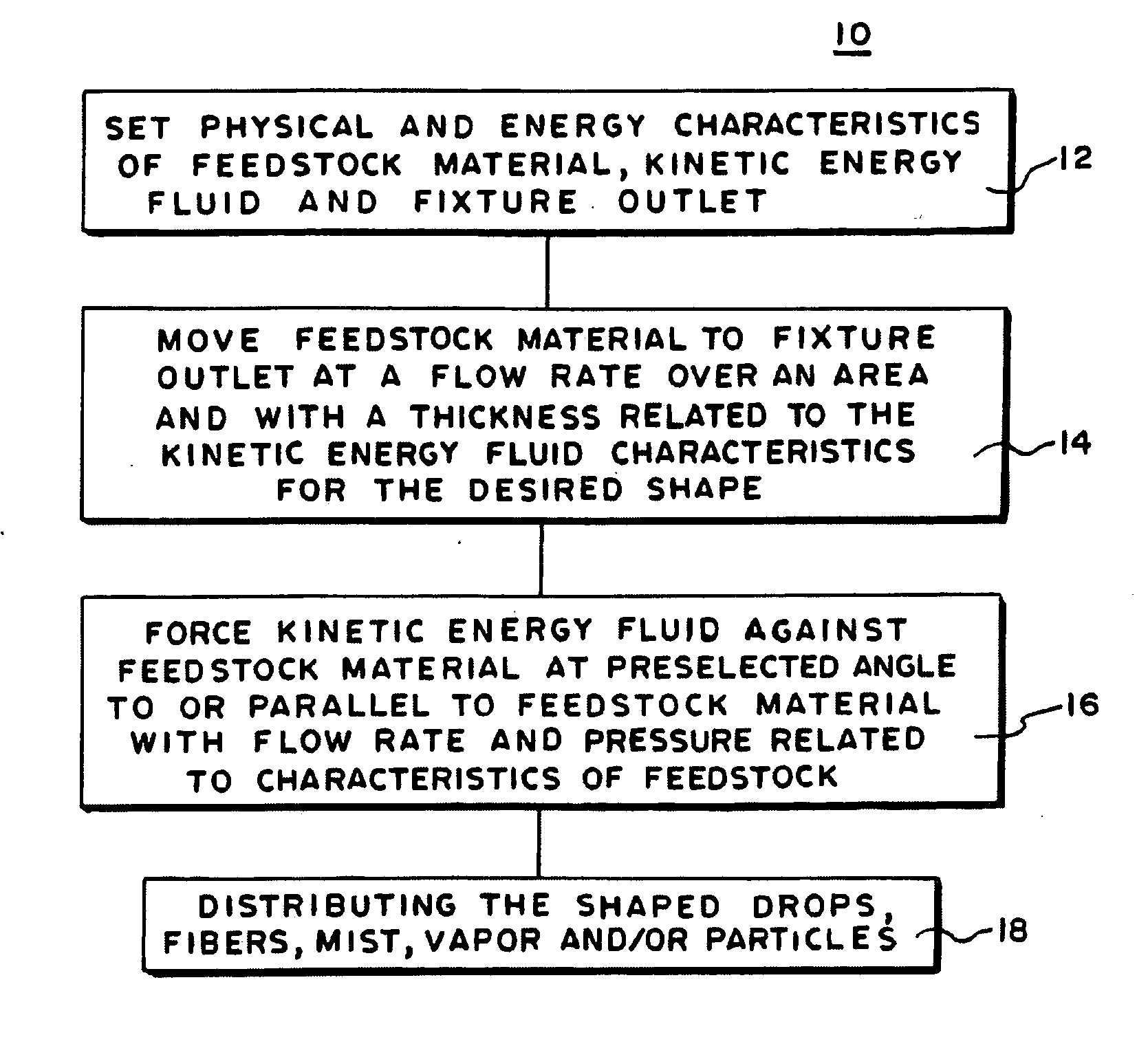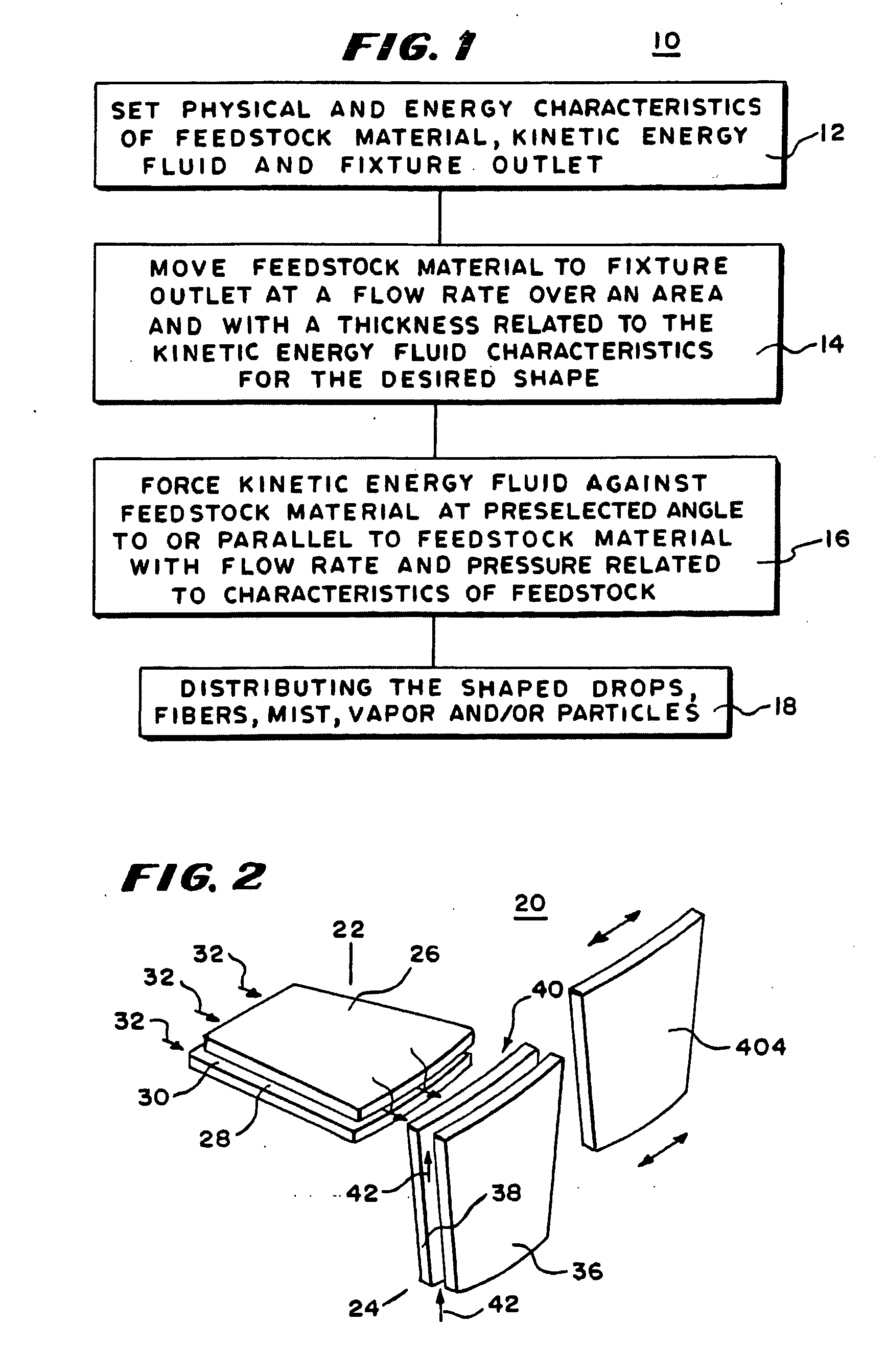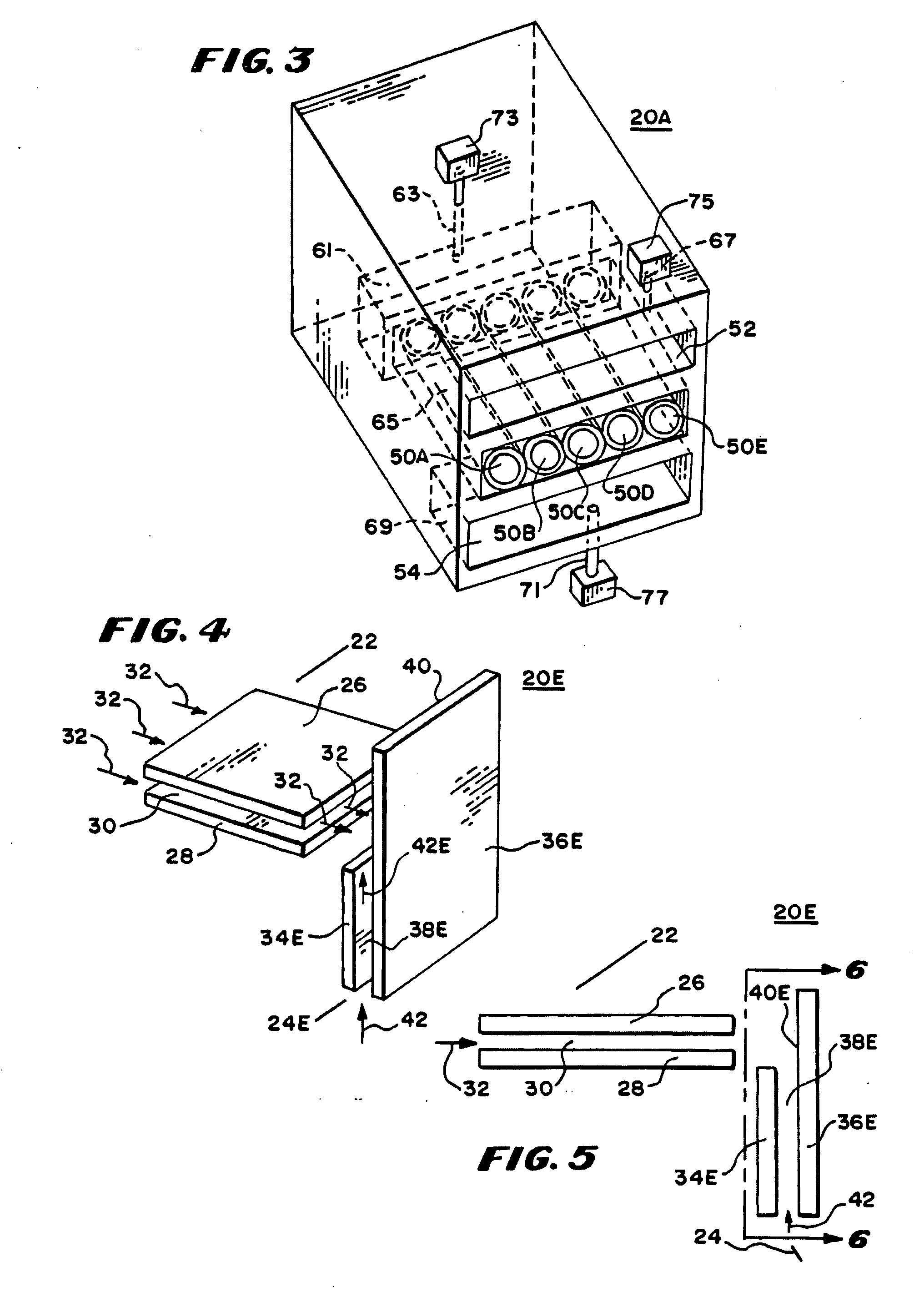In one type of prior art spraying
system for this use, the vehicles used to spray the agricultural fields carry large volumes of diluted active ingredients because it is difficult to spray low volumes of carrier that could deliver more concentrated forms of the
active ingredient.
The prior art spray systems have several disadvantages such as for example: (1) they require vehicles carrying the agricultural inputs to carry heavier than desirable weights of agricultural inputs with the associated water carrier; (2) they require the replenishment of the supply of agricultural inputs carried by the spray vehicles periodically, thus increasing the time and expense of spraying; (3) they cannot be used for the application of some beneficial microorganisms because the microorganisms are killed by the
high pressure drop experienced by the microorganisms upon release through the spray nozzles used in the prior art techniques for application of agricultural inputs; (4) the low
viscosity agricultural inputs drift when sprayed as small drop sizes; (5) some of the carriers used for
dilution, such as water, have
high surface tension and form beads on contact rather than spreading such as over a leaf; (6) the low
viscosity sprayed drops tend to break up because of low
shear resistance, thus forming smaller drops that are subject to increased drift; (7) some of the carriers used for
dilution, such as water, have unpredictable mineral content and pH variations; (8) the angle of the pattern of sprayed fluid from the nozzles is limited thus requiring the
nozzle to be positioned at a
high elevation above the spray target to obtain adequate coverage but the
high elevation increases drift; (9) the use of some combinations of active ingredients in conventional carriers in some circumstances causes
precipitation of active ingredients (10) the prior art systems cannot effectively spray some particles such as particles that have absorbed active ingredients in them that are to be released at a later time and / or environmental condition or over a timed interval because for example they cannot spray viscous formulations that facilitate suspension of such materials; (11) the angle over which the spray is released for hydraulic nozzles is less flexible in prior art nozzles resulting in target coverage limitations; (12) the conventional
high pressure hydraulic atomization nozzles used result in excessive
nozzle wear and consequential variations in the distribution rate and frequent changes in nozzles; (13)
sprayer vehicle speed is limited by the pressure because higher pressures are required for high rates of application and that results in small droplets that drift and there are pressure limitations on the
system components; and (14) some of the materials used for carriers are
low density and / or evaporate quickly thus increasing the tendency to drift.
Moreover, in some instances, the drops lose some carrier by
evaporation and the drops end up with concentrations of materials that cause
necrosis of plants that are not intended to be adversely affected by the spray.
The prior art attempts to reduce drift have been faced by a dilemma—small drop sizes increase drift problems but provide good coverage of the target and large drop sizes reduce drift but provide poor coverage of the target.
The higher concentration sprays have an increased tendency to cause
necrosis of plants.
These prior art approaches have disadvantages of still providing coverage less effective than desired or longer drift distances than desired and are limited in the application rate adjustments that can be practically achieved as application vehicles change speed in order to maintain constant per unit of field area application rates.
The known types of spraying apparatuses have not generally been adapted for use in spraying agricultural inputs nor for conditioning soil or treating microorganisms.
Moreover, the known spraying apparatuses for spraying viscous materials are not readily adjustable for adjusting
drop size, density or pattern of the drops in the field in accordance with circumstances such as
wind speed, distance of spray fixture from the spray target, or speed of a ground vehicle or
airplane.
Higher density materials have been available to use as carriers for active ingredients but have not been used because of economic reasons or undesirable characteristics or the belief that such materials would be difficult to spray because of their
viscosity or density or because of the custom of using water as the primary
carrier material.
Many of the active ingredients are difficult to spray with prior art stand alone nozzles or air assist nozzles because they principally require pressure against an orifice to meter and atomize the materials and that cannot be reasonably accomplished with viscous liquids.
However, it has been found that this general prior art approach is not the best approach and has the
disadvantage of resulting in a low concentration, higher weight and higher
volume load carried by the spray vehicle than is desirable.
However, the addition of glycerin to sprays has not been adopted, possibly because of the expense and the difficulty of spraying higher viscosity materials.
The apparatuses and process disclosed in these patents have a
disadvantage in that they are not adapted for use with viscous materials nor adapted to adjust
drop size and distribution in a manner suitable for the application of many agricultural inputs.
This prior art device has the
disadvantage of requiring the agricultural input to be pumped through a narrow conduit under pressure into the
stream of air and thus is limited in handling viscous agricultural products, semisolids and mixtures of semisolids and particles.
For example, the size of particles or drops or phase of the materials being mixed may not be as appropriate as possible, the selection of materials or proportion of different materials to be interacted may lack some materials or include too many materials or not have a sufficient quantity of some materials or the timing of the interacting of materials may not be suitable or the material compatibility may be for example time or concentration sensitive.
These apparatuses have a tendency to distribute seeds with irregular and poorly controlled spacing between the seeds and under some circumstances damage seeds.
Moreover, they are prone to plugging from the accumulation of seeds in tubes used in the apparatus.
Because the tube-seed ratio must be so large, adequate flow for fluid drilling of large seeds requires inordinate amounts of fluid and very large pumps to get the seeds delivered.
The same limitations apply to
piston or air displacement systems.
These disadvantages limit the flexibility of the current fluid drilling hardware for delivering large seeds, for using smaller quantities of gel to reduce gel cost per acre and for reducing the volume of gel that must be carried by the planting equipment.
Further, this ratio limitation impacts the use of optimal concentrations of treatment chemicals or microorganisms in gels while still being able to use low total amounts of treatment per acre through using for example, gel to seed ratios of 1 to 1.
Thus the
physics of dispensing seeds suspended in non-Newtonian fluids imposes strict limitations on the utility of the current commercial fluid drilling hardware.
This approach has not entirely solved the problem in a satisfactory manner.
This apparatus has a disadvantage of damaging seeds and being relatively complicated and unreliable.
Augers are known for conveying matter from place to place but such augers have not been successfully adapted up to now to fluid drilling apparatuses.
However, this patent does not disclose any method of fluid drilling.
The augers used in the prior art are not designed in a manner adequate to separate seeds, to avoid plugging of the conduits carrying the seeds and gel to the
nozzle from which they are to be expelled into the ground nor to maintain spacing between seeds while moving them along the
auger.
The prior art planting shoes have a disadvantage when used for fluid drilling in that there is insufficient space to permit accurate deposit of gel and seeds at a location protected by the shoe.
These apparatuses have a disadvantage in that they waste expensive additives by applying them nonuniformly and at locations where they are not needed.
Attempts to inoculate seeds with beneficial microorganisms other than
Rhizobia have not been as successful as desired.
 Login to View More
Login to View More 


